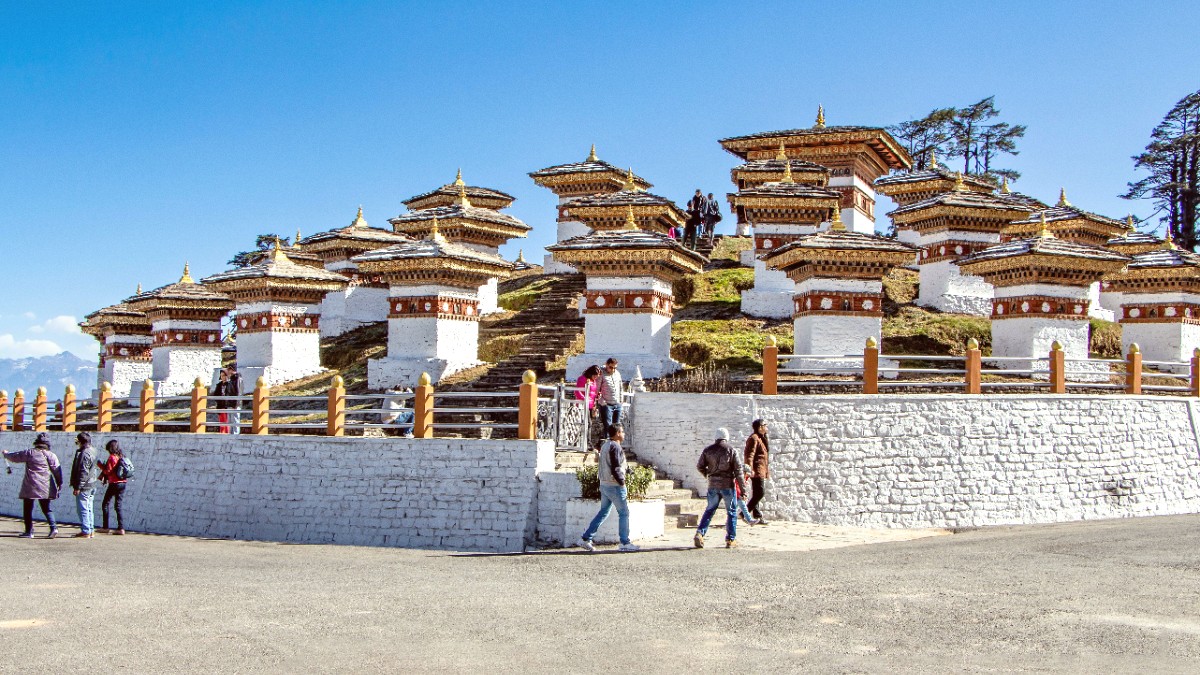
Bhutan
Bhutan's mountainous terrain and varying seasons mean layering is always the best strategy for dressing. Spring (March-May) and Autumn (September-November) mean pleasant daytime temperatures but cool evenings. Summer (Monsoon: June-August) is warm but very wet. Winter (December-February) means cold temperatures, especially at night.
Bhutanese culture is conservative. When visiting sacred sites like dzongs, monasteries, and temples, dressing modestly is not just a recommendation but a requirement. Shoulders and knees must be covered. Avoid wearing shorts, sleeveless tops, tank tops, or revealing clothing in these places.
For general sightseeing and light walks around Thimphu, comfortable closed-toe Walking shoes are suitable.
For any planned trekking or longer hikes, Hiking boots with good ankle support are recommended. Break them in before your trip.
Bring a pair of slip-on shoes for easy removal when entering temples, dzongs, and some shops/homes.
Keeping your documents organized and secure safeguards your trip. Losing important papers can cause significant delays and stress.
Bhutan uses Type D and Type G electrical outlets. The standard voltage is 230V at 50Hz. Most modern electronics are dual voltage (100-240V), needing only an adapter. For single-voltage devices, a voltage converter would be necessary.
Your mobile phone needs to be unlocked to use a local SIM card. Mobile network coverage is good in Thimphu and major towns. Bhutan has two main providers: Bhutan Telecom (B-Mobile) and TashiCell. Purchase a local SIM card at Paro Airport or provider offices in Thimphu.
Use cloud storage (Google Drive, Dropbox, iCloud) for photos and documents. Consider a Small external hard drive for large photo libraries.
Google Maps is helpful; download offline maps for Thimphu and surrounding areas before your trip.
Google Translate (offline Dzongkha pack) for basic communication. WhatsApp is widely used for guides.
Your personal health and wellness receive considerable attention when planning a trip to a new environment. Preparing a well-stocked kit offers peace of mind.
The high altitude means stronger ultraviolet (UV) radiation, even on cloudy days. Protect yourself from sun exposure. Dengue fever is present in Bhutan, especially during the monsoon season and in lower-lying areas. Protect yourself from insect bites.
Your planned activities determine the specialized equipment you need. Thimphu and its surroundings offer opportunities for cultural exploration and outdoor adventures.
Thimphu offers incredible landscapes, architecture, and cultural moments. Capture them with appropriate gear. Beyond the camera itself, consider necessary accessories.
Consider what to rent or bring based on quality and availability. Renting locally might be an option for some items, while others are best brought from home.
Beyond the essentials, a few miscellaneous items contribute significantly to your comfort and overall travel experience in Thimphu.
Embrace sustainable practices during your visit to align with Bhutan's environmental focus and reduce your footprint. Reusable items are .
Carry BTN or small INR denominations.
Specific prescriptions; bring sufficient supply.
High-quality hiking boots and jackets.
Specific gluten-free or unique snacks.
Roll your clothes to save space and reduce wrinkles. Use Packing cubes to organize different types of clothing for easier access during your journey.
Pack your daypack and essential personal items (medication, documents, one change of clothes) in your carry-on luggage. This makes sure you have what you need even if checked luggage faces delays.